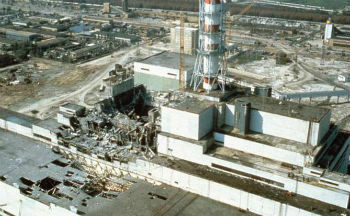You've certainly heard of the Arabs, the Muslim religion and Islam. Certainly, he has also had contact with some of the achievements of the Arabs, such as Arabic numerals, the number zero or even the compass. These contributions of Arab and Islamic peoples to the world were made possible by the development of an immense empire, the islamic empire, which existed between the 7th and 13th centuries. The text below presents some general characteristics of what this empire was.
You arabs they were people who mainly inhabited the Arabian Peninsula, located in the Middle East. In the coastal region, they constituted some cities and developed agriculture, which made possible a sedentarization, that is, the fixation in a specific place. On the other hand, in the interior of the peninsula, as it is mostly desert areas, they lived as nomads, whose main activity was commerce, carried out in large caravans.
The Arabs organized themselves politically into tribes, with no unity in a state. In the religious aspect, they were polytheists, believed that all beings and elements of nature had life (animism) and worshiped objects considered sacred (fetishism).
Among these Arabs there was a call Mohammed, who was born in the city of mecca, in 570. Mecca was an important commercial center of the Arabian Peninsula, with Muhammad being a merchant in his youth, which allowed him to come into contact with several other cultures, such as Christians and Jews. According to tradition, Muhammad when he was 40 years old received the revelation of the word of God (Allah) through the angel Gabriel. In that revelation, Allah had asked Muhammad to spread the teaching that there was only one god, Allah, and that Muhammad would be his prophet.
Starting this spread among his family, Muhammad began to preach the teaching in Mecca. As a commercial city, there were people with varied beliefs, merchants saw preaching as a threat to commerce and priests feared for their religious dominance. Muhammad was pursued, being forced to flee to the northern city of Iatreb in 622. This episode became known hegira (escape, in Arabic), the starting point of the Muslim calendar. In Iatreb, Muhammad was able to convert the population and unite the local tribes, becoming the city's religious and political leader. Iatreb was renamed Medina (city of the prophet, in Arabic) and Muhammad formed an army of 10,000 men who headed for Mecca, conquering it in 630.
In Mecca, Muhammad and his followers destroyed all the idols that were worshipped, except the “black stone”, a sacred object symbolizing the union of all Muslims, and the Kaaba, the place that houses the stone, which became the center of the main temple of the religion, dedicated solely to Allah. With the conquest of the city, the constitution and rapid expansion of the Islamic Empire also began.
While still alive, Muhammad saw his empire conquer the entire Arabian Peninsula. With his death in 632, political, religious and military powers were entrusted to the caliphs, the substitutes for Muhammad. the first four caliphs they were relatives of Muhammad and ruled the empire until the year 661, when they managed to expand the Islamic borders into Egypt, Palestine, Syria and Persia. It was the first phase of expansion of the Islamic Empire.
THE second level had as holders of power the family of Umayyads, who made Damascus the capital of the Empire, ruling until 750. During this period, the Arabs became a naval power, reaching India, in the East, dominating North Africa and starting the conquest of the Iberian Peninsula, in Europe.
THE third phase The Empire began with the Abbasid dynasty, which transferred the capital to Baghdad, in Mesopotamia. With the great extension of the Empire, it was divided into the Emirates, which were independent states. They also conquered Sicily, on the Italian Peninsula, as well as the islands of Corsica and Sardinia. However, the Empire began to decline with the loss of territories in the East, to the Seljuk Turks and to the Mongols. Domains in the Iberian Peninsula would still be held until 1492, when the Spaniards expelled them from the region during the Reconquest Wars.
However, the Arab legacy remains present today due to the great contributions in the dissemination of Greco-Roman works in architecture, mathematics, literature, science and many other aspects cultural.
* Image Credit: Zurijeta and Shutterstock.com
By Tales Pinto
Graduated in History


